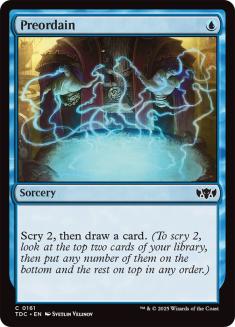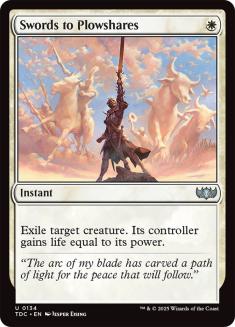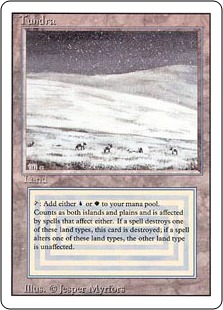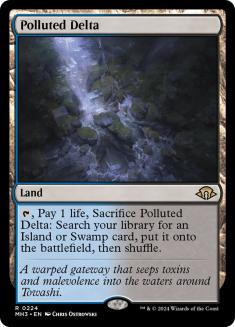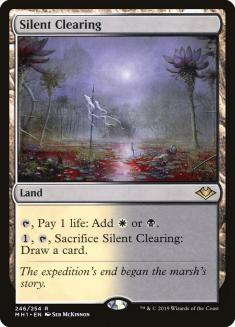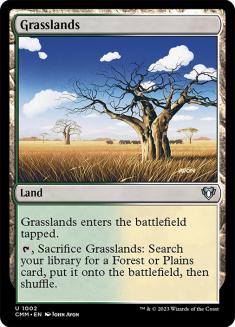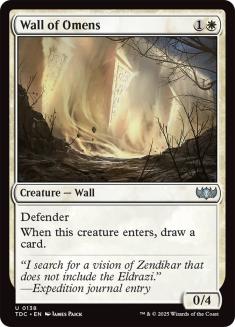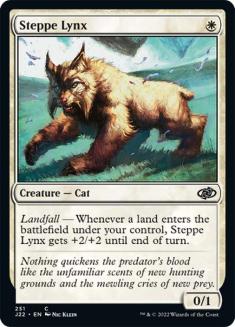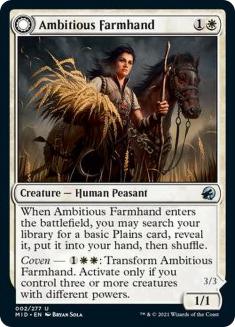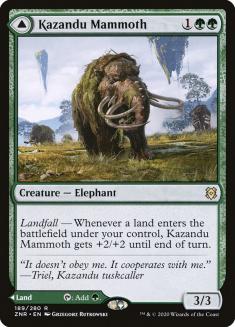Happy Halloween week, gamers! I don’t have any particularly spooky content for you today, but I am a big Halloween fan. It sort of represents the last leg of tolerable weather for a while here in Minnesota. What I do have for you today is a pretty serious update to Twoberts as a Cube format, and the primary activity that I have planned for the coming winter months. Today I would like to introduce you to Modular Cube Draft facilitated by the 180-card Twobert module.
Modular Cube Draft?
Before I get too far along, I want to make sure we’re all clear on what I’m referring to. Modular Cubes are a concept that many Cubers have conceived of or even attempted in various forms, but I’m not confident that the average player is more likely to think that I’m referring to the modular mechanic than a unique Cube structure. For the mechanic, see my Artifact Twobert. For today’s purpose though, I’m referring to Cubes with different sections, or modules, that can be shuffled together for drafts and separated out after.
I was first introduced to the concept by my friend and business partner Mike Hawthorne many years ago in a project that he pretty quickly abandoned. The idea was that he would have some number of different modules, each with their own theme, that could be shuffled together in different combinations to functionally represent a large number of different Cubes. When we discussed it we posited that different modules would represent different archetypes or even different power levels. You’d have things like a Reanimator module and a Madness module that featured cards that would facilitate their respective archetypes, and then stuff like a lands module or a Power module that introduced mana fixing or the Power 9. You get it.
The reasons that he abandoned the project were the overwhelming number of variables and the amount of work it takes to sort all of that out. In theory you’re just looking for some number of modules that evenly divide into 360 cards and can be swapped around, with 90 and 45 cards being the most common numbers we discussed. In practice, it’s really tough to believe in the quality of the gameplay with that sort of project by looking at it on paper. The end result was that Mike had double-sleeved 90 cards as a base module and stamped the inner sleeves with the letter A before giving up and having those cards shuffled into decks or different Cubes. This wasn’t the end of our discussions, but it was clear that the motivation had died when I started seeing those A stamps in his Powered Cube.
I sketched up a bunch of different modules on Cube Tutor but never got excited enough about how the whole thing would come together as a play experience to start physically assembling anything. That’s where I had left things for years until the end of last year.
In the realm of more simple Cube designs, Twoberts were an immediate hit for my playgroup, and I’ve gotten tons of positive feedback from other players since I started writing about them and working on different builds. I started joking at one point that two could be shuffled together if we ever wanted to play with eight players again. Of course, as soon as I made the joke I started seriously wondering what that would look like and if I could make it work.
It also turned out that I wasn’t the only one who had this idea! In fact, Ryan Saxe started seriously working on a Modular Cube after I shared my Tempo Twobert list. His initial idea was to design a “Durdle Twobert” that could be played independently or shuffled together with the Tempo Twobert to support more players, with no overlapping cards between the two.
He bounced some ideas off of me while working on it and his passion as well as his insistence on maintaining singleton between the two Cubes elevated my interest in the idea of non-overlapping Twoberts that could be shuffled together as a form of Modular Cube. His insistence on not breaking singleton really resonated with me when I started thinking about the cards that would end up with multiples if I were to just shuffle any of my existing Twoberts together. There’s a time and place for multiples when done deliberately, but doubling up on cards like Preordain and Thoughtseize without much consideration for the impact this sort of redundancy can have on a play environment isn’t the sort of thing that I can endorse.
I liked a lot of Ryan’s thoughts regarding Two Twoberts and he did some really good work on the project, but in starting to work on my own Modular Cube I thought it more fitting to work with the original Twobert. It’s a design that’s both more generic and with more specific curve and color parameters that makes it easier to see how new elements fit into the environment, which would give me better insights if I later decided to work on modular versions of my other designs.
With the lengthy exposition out of the way, it’s time to look at how I went about designing my first crack at a Modular Twobert.
The Modular Twobert
With the idea being to design a Twobert to complement the base model with no overlapping cards, I decided to match the exact color distribution in the companion Modular Twobert. It’ll be useful to reference the list as I go over the design, and you can find it on Cube Cobra here.
For the purpose of designed the Modular Twobert, it made sense to me to start with the lands. The sorts of lands that you include in a Cube really inform the archetypes and types of spells that are able to thrive, and with a couple of great cycles already being used in the base model, this would be a fairly awkward place to run into issues if I saved the lands for last.
With shocklands, fastlands, and creature duals in the base model, this made working with fetchlands and original duals something of a no-brainer for me. I knew I would have to be careful using these lands to limit the power of decks that just took lands over everything and forced five-color manabases after trying this setup in different designs, but I was confident I could make it work knowing a handful of things not to do.
After those lands, Horizon lands are my favorite cycle, and part of my strategy for limiting the power of mana fixing in the Cube as well as for complementing the base model was to make the environment very aggressive. That left a problem with those being an incomplete cycle, but I’ve been happy with Mirage fetches on the allied side of things. They’re plainly worse than their more recent counterparts, but they make decks more than you’d think and meaningfully contribute to a couple of the Cube’s archetypes.
I am mindful of the fact that not everybody just has a ten set of original duals laying around, nor the means or desire to track one down, and if that’s your situation, there is a much more cost-effective substitution you can make. If you sub Pathways in for shocklands in the base model and then put the shocklands alongside the fetchlands in the Modular Twobert, you preserve everything on an archetypal level without dramatically changing the power level.
Once I had my lands picked out, I mapped out what I wanted every color pair to do, with the broad archetypes for each color pair having significant influence on which gold cards I would feature would be. I generally wanted an aggressive slant given the controlling/midrange slant of the base model, and I fully planned on a heavy landfall theme once I landed on Mirage fetches. These are the themes I landed on for each color pair:
- Azorius: Blink
- Dimir: Ninjas/Tempo
- Rakdos: Sacrifice
- Gruul: Landfall
- Selesnya: Landfall
- Orzhov: Sacrifice
- Izzet: Spells Matter/Tempo
- Golgari: Delirium
- Boros: Landfall
- Simic: Support
You’ll notice that there is significant overlap across the colors, with these generally being flavors of aggressive decks that can lean a little more midrange. Landfall is pushed in Naya but also spreads pretty well across all five colors, which is the sort of thing that makes the pick orders more dynamic given that the various cards and archetypes can blend together very effectively. In fact, Simic as a color pair doesn’t really even do its own thing, but rather looks to offer some secondary support for landfall, spells matter, and delirium, which I find far preferable to Simic’s usual “mana and stuff” archetypes that would threaten to really exploit the power of the mana-fixing lands in the Cube.
Once I landed on the gold cards, the mono-color cards fell into place relatively easily. It was somewhat difficult to avoid using any cards from the base module, but establishing themes made it much easier to come up with cards that fit this environment. Individual mono-color cards look to reinforce at least one but hopefully more of the two-color themes. If you look into the white column you’ll see Wall of Omens as a card that’s really just for the blink deck, and Steppe Lynx as explicit support for aggressive landfall decks. Compare to Ambitious Farmhand, which is great for a deck that’s interested in landfall, blink, or both!
Something that’s a bit more subtle when looking at the Cubes independently is that the mana curve of the Modular Twobert is very intentionally designed to complement that of the original Twobert. One of the fundamental aspects of the original Twobert is that every color gets one six-drop with some liberty given to green to go a little bigger, and as such the Modular Twobert doesn’t encroach on this space. Seeing Grave Titan in a pack will be just as significant whether you’re playing the original Twobert or the two modules shuffled together.
It was a fun challenge to navigate designing the Modular Twobert against the original list, and I’ve been really happy with how it plays as an individual Twobert as well as how the two Cubes complement each other as a Modular Cube. I have some more thoughts on how to work on designing different Modular Cubes that I’d like to share, but first I’d like to lay bare the logistical elements, as I’m sure some of you have some questions about all of that.
Logistics
This is a fairly novel concept, so I’m going to get a little technical and just explicitly lay out how everything works regarding playing the two modules independently or together. Both the original Twobert and the Modular Twobert are kept separate as their own Draft environments that support two to four players. For drafts with up to eight players, you simply shuffle the two Twoberts together and deal out packs like a regular Cube. None of that is terribly complicated, but it does lead to the very important question of how you get everything separated and nice after you’re done drafting.
I mentioned that Mike had used letter stamps on an inner sleeve when he started working on his own project, and some kind of marking on an inner sleeve is what I recommend. I suppose you could mark the cards themselves, but do so at your own peril. You could also mark the outer sleeve, but then your marks will be susceptible to shuffle wear and the elements, as well as requiring remarking when you eventually change your outer sleeves. I use and recommend perfect hards, as they’re inner sleeves that I’m not convinced a person would ever need to replace.
With regard to marking inner sleeves, keep in mind that not all ink is going to dry on plastic. I foolishly purchased some cheap stamp ink without considering this and found out the hard way. A common Sharpie will do the trick though. Just make sure to give the ink a couple seconds to dry before you stack your cards, because the ink will absolutely smudge before it sets.
Food for Thought
And lastly, some thoughts on what worked with this design and some areas that I believe could be improved in future designs. Something that I really enjoy about these two Cubes is that there is support for all of the themes in the Modular Twobert featured in the original Twobert. Not all of it is explicit, but something as simple as the Young Pyromancer on the Modular side being shuffled up with the Ponder and Preordain in the original Twobert quietly offers synergies across both modules.
A fun example of this is with regard to Kazandu Mammoth and Tireless Tracker. You could absolutely make the argument that one or both would be a better fit for the Modular Twobert, but as the lists stand it’s really cool to have these sorts of cards that get much better in the 360-card environment.
While I do like these elements conceptually, I will say that the design process of starting with a whole Twobert and designing an entire Twobert around it is somewhat restricting and doesn’t fully optimize the experience. Something that I mentioned on The 540 when we reviewed the Nega Cube that was part of Magic Online (MTGO)’s Spotlight Series was that it was somewhat unfortunate that the Nega Cube didn’t have any bargaining power against the existing MTGO Cubes. It wasn’t allowed to feature cards from the Vintage, Legacy, or Modern Cubes and that was that. For future modular projects I intend to fully design each module with the others in mind. I intend to maintain some synergies that are only realized in the 360-card drafts, but some cleaner breaks like putting Kazandu Mammoth in the landfall module make a lot of sense to me.
The Future of Modular Twoberts
As I’ve said, having two Twoberts designed to be drafted independently for smaller drafts or together to facilitate more players has been both a fun design challenge and play experience for me. I’m only scratching the surface here, and there are countless ways to iterate on this sort of environment. Somebody mentioned to me on Twitter that they were working on a Innistrad: Midnight Hunt Twobert to exist opposite an Innistrad: Crimson Vow Twobert as inspired by Saxe’s Two Twoberts Tweets. I think that sounds incredibly cool, and I also like the idea of going a little further and having modules for the old Innistrad sets in the spread. Set Cubes are very popular for high nostalgia value and ease of design, and they strike me as a very easy concept to incorporate into the Modular Twobert model.
With regard to this project being a Modular Cube, I will note that there aren’t a lot of modules in the design I presented today. Ultimately that’s a shortcoming of designing around an existing Cube, but working around it will be easier when the individual modules are fully designed with the others in mind. I don’t think that it would be particularly difficult to design three modules from the ground up at around the power level of the Modular Twoberts I presented today. It is more challenging, but really not all that different from designing a 540-card Cube without these parameters.
As for why you would do so, my reasoning is that the small-player Draft experiences are much better with Twoberts than larger Cubes, and that you have more agency over the supported archetypes for drafts of the small and large drafts alike. Modular Twoberts offers a varied play experience with more controlled variance, which in my experience leads to higher player agency and better games. I’ve already started work on a more complex Modular Twobert environment, and I can’t wait to share my findings.
I hope you’ve enjoyed this dive into a highly specialized form of Cube Draft, and I hope you enjoy your Halloween weekend if you celebrate. Or if you don’t. Have fun, and stay safe.


